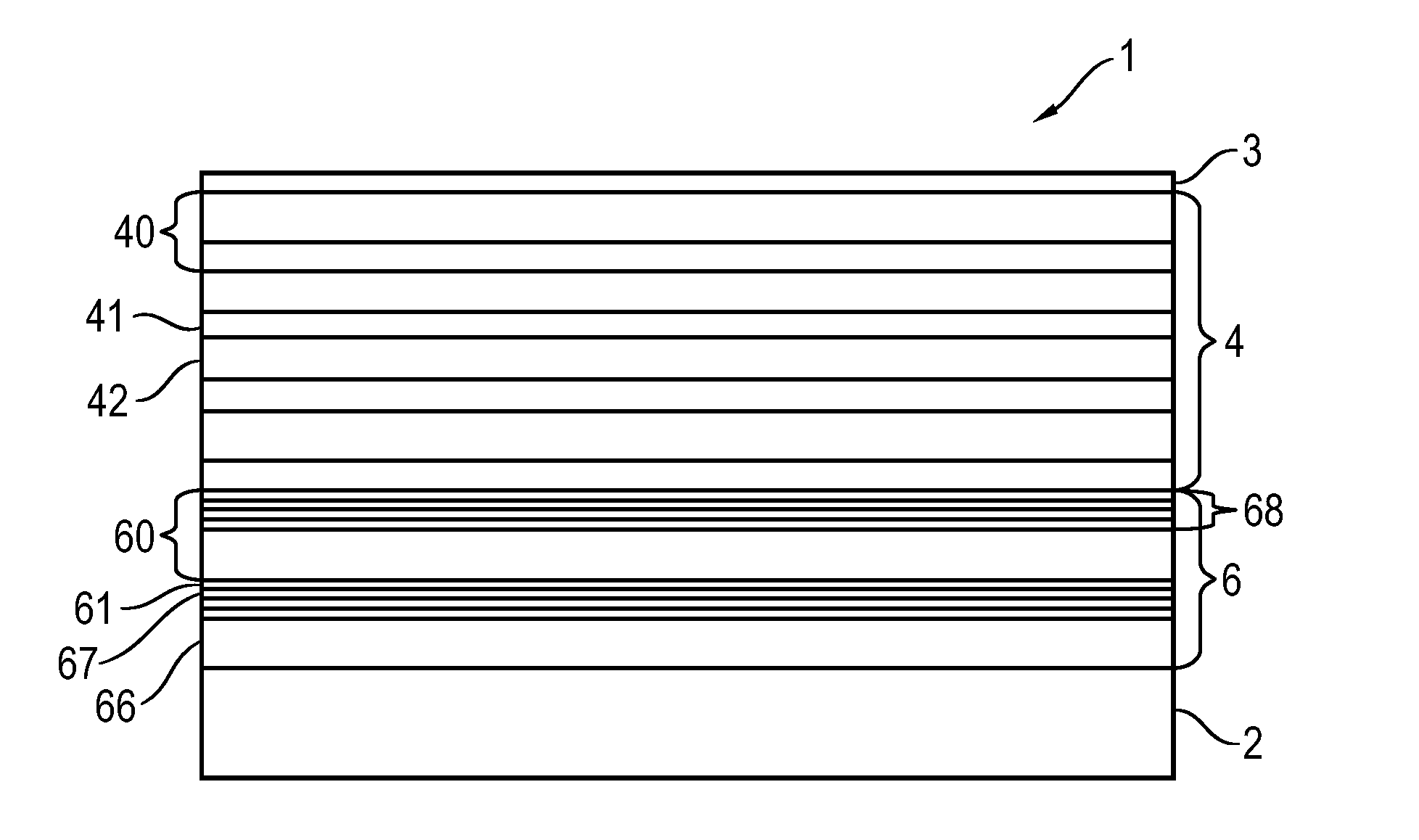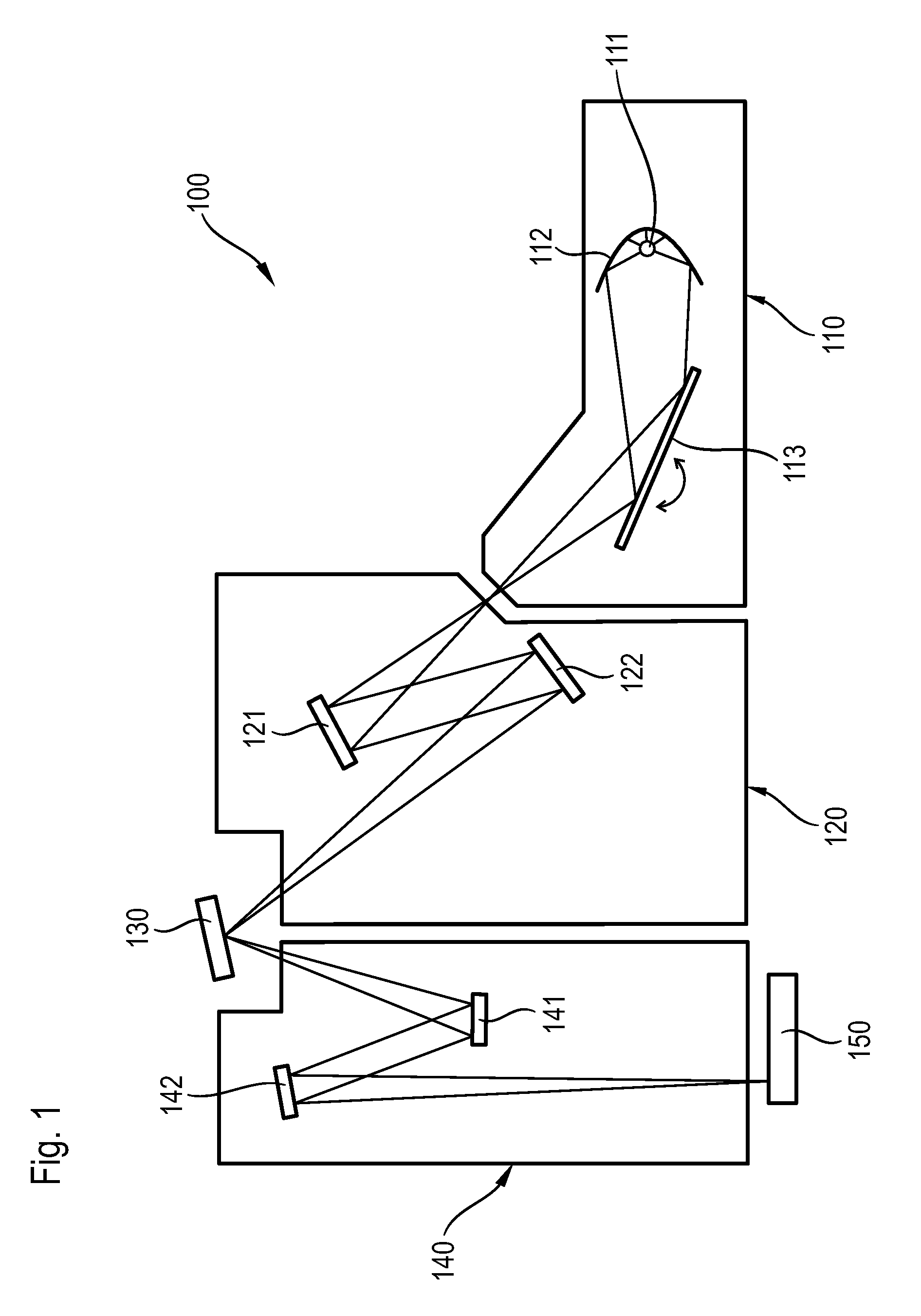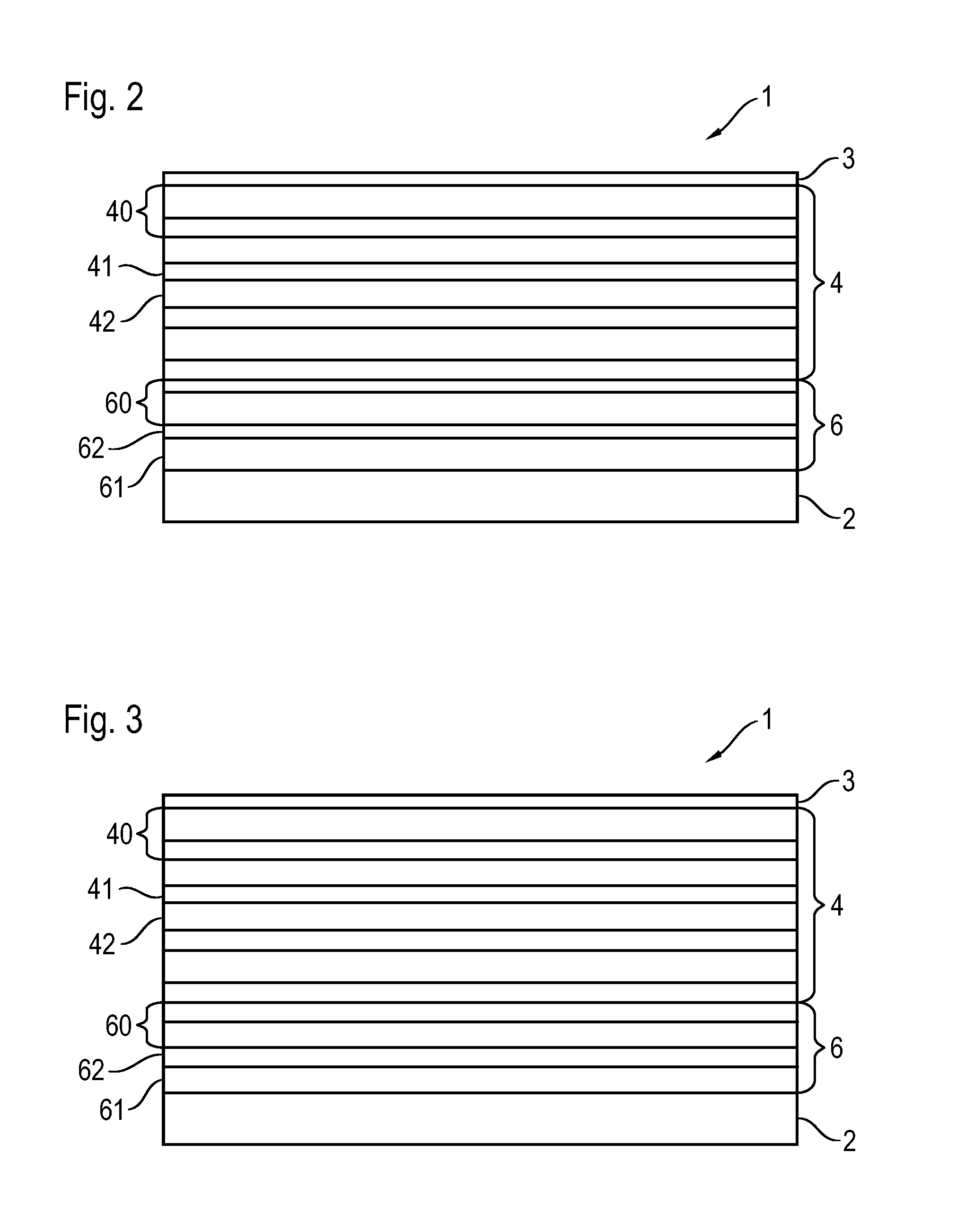Reflective optical element for EUV lithography
a technology of optical elements and lithography, applied in the field of reflection optical elements, can solve the problems of increasing the micro roughness of the surface of each layer, the optical element is substantially interfered, and the expensive special coating method cannot be resorted to, so as to achieve good stress compensation, simplify the entire coating method, and good stress compensation
- Summary
- Abstract
- Description
- Claims
- Application Information
AI Technical Summary
Benefits of technology
Problems solved by technology
Method used
Image
Examples
Embodiment Construction
[0034]FIG. 1 schematically shows an EUV lithography apparatus 100. Substantial components thereof are the beam-shaping system 110, the illumination system 120, the photomask 130, and the projection system 140.
[0035]A plasma source or even a synchrotron can serve, for example, as a radiation source 111. For the wavelength range from 5 nm to 12 nm, in particular, X-ray lasers (X-FEL) are also suitable as a radiation source. The radiation emitted is first focused by a collector mirror 112. Moreover, a monochromator 113 is used to filter out the operating wavelength by varying the angle of incidence. In the wavelength range mentioned, the collector mirror 112 and the monochromator 113 are usually formed as reflective optical elements having a multilayer system of at least two alternating materials with different real parts of the refractive index at the working wavelength in order to achieve reflection of the radiation of the working wavelength. Collector mirrors are usually dish-like r...
PUM
 Login to View More
Login to View More Abstract
Description
Claims
Application Information
 Login to View More
Login to View More - R&D
- Intellectual Property
- Life Sciences
- Materials
- Tech Scout
- Unparalleled Data Quality
- Higher Quality Content
- 60% Fewer Hallucinations
Browse by: Latest US Patents, China's latest patents, Technical Efficacy Thesaurus, Application Domain, Technology Topic, Popular Technical Reports.
© 2025 PatSnap. All rights reserved.Legal|Privacy policy|Modern Slavery Act Transparency Statement|Sitemap|About US| Contact US: help@patsnap.com



